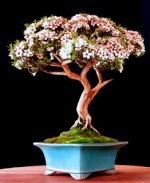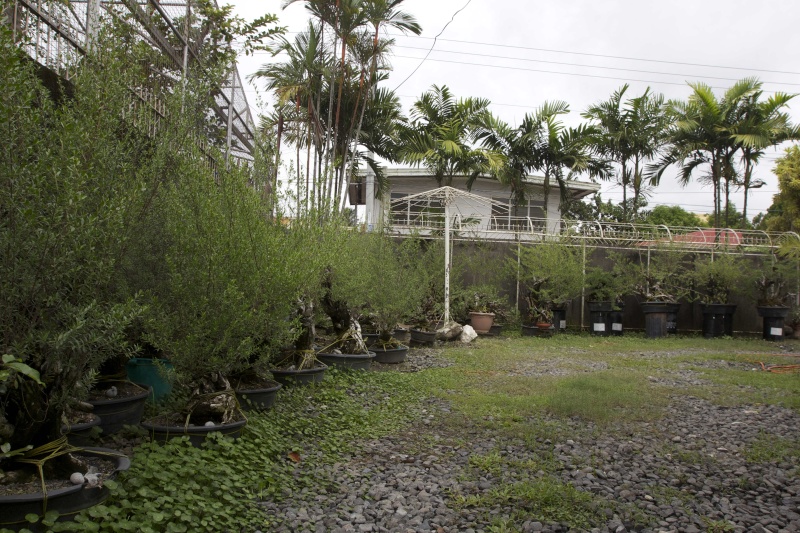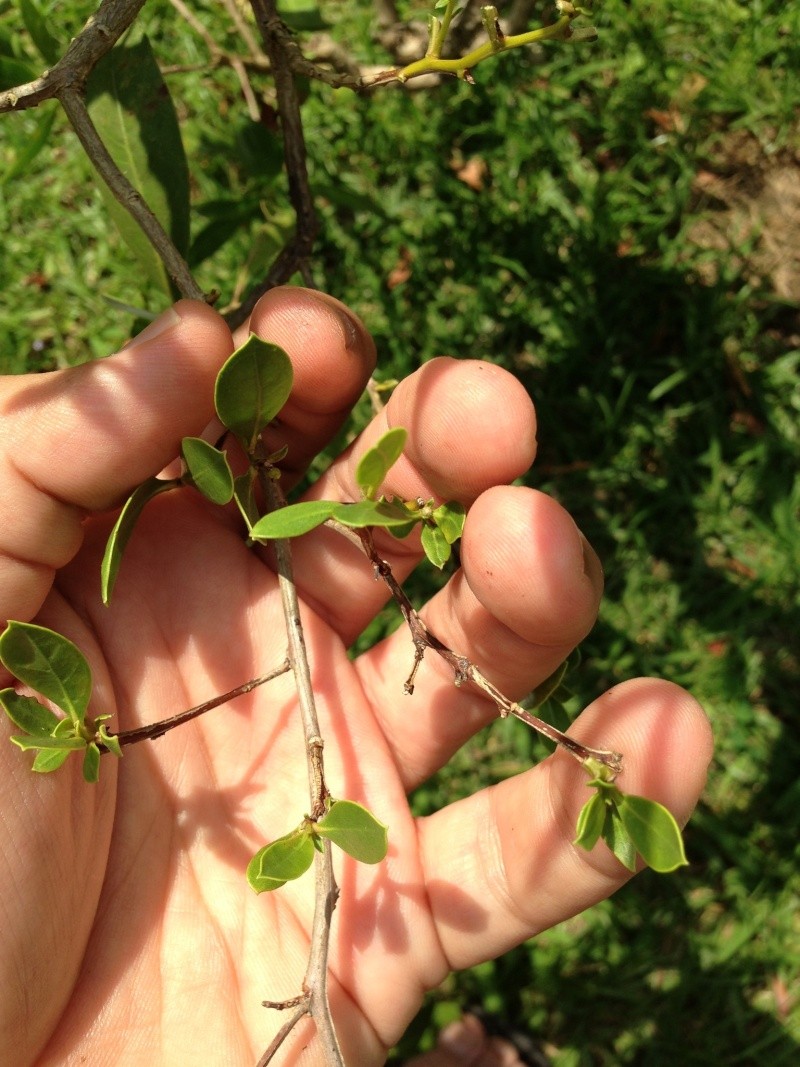Fault in design
+16
jrodriguez
john5555leonard
lennard
newzealandteatree
Joao Santos
Ferdie *
mokster
Nigel Parke
Cockroach
Sam Ogranaja
Jed Franco
Khaimraj Seepersad
my nellie
Robert Steven
dorothy7774
Todd Ellis
20 posters
Page 2 of 4
Page 2 of 4 •  1, 2, 3, 4
1, 2, 3, 4 
 Re: Fault in design
Re: Fault in design
Thanks to my two good Mentors for bringing this kind of problem to this forum, it really helps a lot, by the way, to Robert and Bro Jun, would proper fertilization would alleviate somehow or help a lot in curing such problem of this phempis of ours, based on my experience of such, tho i have only 2 phempis in my possession for almost 4 1/2 years now, the technique we do use and familiar with is the one you just mentioned in this forum, i never put any salt nor bagoong, were we used commonly here, what i did is, i made use the common fertilizer used by my mother in Davao, we called it the urea, and complete fertilizer 14-14, but different make of urea that is made in Davao, to make the story short, i never experience this kind of problem for now. . . what i do, i just pampered it with fertilizer, alternately and i leave everything with the nature itself, the salty air coming from the sea (500m away from my house to the sea), really help a lot .. but the way you sound it, sooner or later, it will happen to everyone...
Last edited by Ferdie * on Mon Mar 04, 2013 11:58 pm; edited 1 time in total (Reason for editing : correction)

Ferdie *- Member
 Re: Fault in design
Re: Fault in design
Thanks Jun and Steven for the educational posts.
I beleive that this problem is common to some other plants like azaleas.
I remember to read an article in Bonsai Focus where it was explained precisely this "lack of vigor" caused by very densed twigging effect and what should be done. There is also a japanese word for this special maitainence that i don't recall.
João Santos
I beleive that this problem is common to some other plants like azaleas.
I remember to read an article in Bonsai Focus where it was explained precisely this "lack of vigor" caused by very densed twigging effect and what should be done. There is also a japanese word for this special maitainence that i don't recall.
João Santos

Joao Santos- Member
 Re: Fault in design
Re: Fault in design
Robert: Thanks for sharing your knowledge, expertise and experiences.
Jun: Thanks for raising this subject. I have no experience with Pemphis. However this subject of keeping our bonsai alive and healthy is a universal one. There are many reasons why bonsai deteriorate. It could be the weather (too hot, too dry, too wet etc), the soil(too acidic or alkaline, lacking trace elements, drainage etc), improper or insufficient care (not enough feeding or watering) and of course disease.
Let me just touch on my personal experiences. I found that constant trimming do weaken the bonsai. The delicate specie more so than the hardier ones. I also found that too dense foliage will lead to die back of the inner branches and twigs. My approach is to thin out the foliage at least once a year. If I have the time I will do more often. It is time consuming but a necessary step to keep the tree healthy. I also allow my bonsai to grow with minimal restrain every few years. I found that this helps the bonsai to rejuvenate and get stronger. This will affect the design of the bonsai. However with constant attention the overall design of the tree can be maintained. Strong water shoots should be removed. I also found that putting my bonsai into a larger growing pot with clean soil on the first sign of my bonsai weakening do helps to turn the situation around. Some weak solution of seaweed extract also helps. However bonsai weaken by disease must be treated with the appropriate insecticide.
Cheers,
CJ
Jun: Thanks for raising this subject. I have no experience with Pemphis. However this subject of keeping our bonsai alive and healthy is a universal one. There are many reasons why bonsai deteriorate. It could be the weather (too hot, too dry, too wet etc), the soil(too acidic or alkaline, lacking trace elements, drainage etc), improper or insufficient care (not enough feeding or watering) and of course disease.
Let me just touch on my personal experiences. I found that constant trimming do weaken the bonsai. The delicate specie more so than the hardier ones. I also found that too dense foliage will lead to die back of the inner branches and twigs. My approach is to thin out the foliage at least once a year. If I have the time I will do more often. It is time consuming but a necessary step to keep the tree healthy. I also allow my bonsai to grow with minimal restrain every few years. I found that this helps the bonsai to rejuvenate and get stronger. This will affect the design of the bonsai. However with constant attention the overall design of the tree can be maintained. Strong water shoots should be removed. I also found that putting my bonsai into a larger growing pot with clean soil on the first sign of my bonsai weakening do helps to turn the situation around. Some weak solution of seaweed extract also helps. However bonsai weaken by disease must be treated with the appropriate insecticide.
Cheers,
CJ

newzealandteatree- Member
 Auxins
Auxins
"In fact, auxins also has a function to suppress bud break at all the buds behind it on the branch, certain pinching and prunning will actually disturb the auxins in certain level and generate new buds behind it to break (we use this concept for clip-and-grow technique or to grow thicker branch by letting the apical tip to grow without disturb); but due to the densed condition which caused shady, there are no rooms for the new buds to break and grow; and that’s why the overall situation causes the imbalance growth signal communication. Consequently, the twiggs start to die, leaves drop, less leaves less auxins, less auxins less cytokinens and so on the cycle…"
Hi Robert.
I am building the lower branches on a Buddleja saligna. I let the tree grow freely for a few months to strengthen the tree in general. I want the bottom branches of the tree to thicken up so I removed the twigs from the upper half of the tree a few weeks ago but left the strong twigs on the lower branches. I have noticed that the cut back upper half of the tree is not pushing any new growth.
Can the reason for these upper branches not budding out again be that the stronger lower branches auxins are suppressing the buds on the top branches also?
Will this have to be a balancing act between getting the lower branches to thicken up and keeping the upper pads healthy?
Would it be better then to remove the growing tips of the longer lower branches without cutting them back because I need the leaves of the twigs to build the thicker branches?
Will this then get me buds breaking on the strong twigs as well as on the heavily cut back area of the tree.
It seems that Buddleja saligna has the same problems as the species you describe. Maintaining them in a heavily pinched state with dense foliage pads leads to very sickly looking trees- this species is probably the most collected one in South Africa but you don't see them much at shows and I know a few experienced bonsai growers here are disposing this species because it is too much "trouble".
Thanks for the good work and insight.
Lennard
Hi Robert.
I am building the lower branches on a Buddleja saligna. I let the tree grow freely for a few months to strengthen the tree in general. I want the bottom branches of the tree to thicken up so I removed the twigs from the upper half of the tree a few weeks ago but left the strong twigs on the lower branches. I have noticed that the cut back upper half of the tree is not pushing any new growth.
Can the reason for these upper branches not budding out again be that the stronger lower branches auxins are suppressing the buds on the top branches also?
Will this have to be a balancing act between getting the lower branches to thicken up and keeping the upper pads healthy?
Would it be better then to remove the growing tips of the longer lower branches without cutting them back because I need the leaves of the twigs to build the thicker branches?
Will this then get me buds breaking on the strong twigs as well as on the heavily cut back area of the tree.
It seems that Buddleja saligna has the same problems as the species you describe. Maintaining them in a heavily pinched state with dense foliage pads leads to very sickly looking trees- this species is probably the most collected one in South Africa but you don't see them much at shows and I know a few experienced bonsai growers here are disposing this species because it is too much "trouble".
Thanks for the good work and insight.
Lennard

lennard- Member
 Re: Fault in design
Re: Fault in design
lennard wrote:"In fact, auxins also has a function to suppress bud break at all the buds behind it on the branch, certain pinching and prunning will actually disturb the auxins in certain level and generate new buds behind it to break (we use this concept for clip-and-grow technique or to grow thicker branch by letting the apical tip to grow without disturb); but due to the densed condition which caused shady, there are no rooms for the new buds to break and grow; and that’s why the overall situation causes the imbalance growth signal communication. Consequently, the twiggs start to die, leaves drop, less leaves less auxins, less auxins less cytokinens and so on the cycle…"
Hi Robert.
I am building the lower branches on a Buddleja saligna. I let the tree grow freely for a few months to strengthen the tree in general. I want the bottom branches of the tree to thicken up so I removed the twigs from the upper half of the tree a few weeks ago but left the strong twigs on the lower branches. I have noticed that the cut back upper half of the tree is not pushing any new growth.
Can the reason for these upper branches not budding out again be that the stronger lower branches auxins are suppressing the buds on the top branches also?
Will this have to be a balancing act between getting the lower branches to thicken up and keeping the upper pads healthy?
Would it be better then to remove the growing tips of the longer lower branches without cutting them back because I need the leaves of the twigs to build the thicker branches?
Will this then get me buds breaking on the strong twigs as well as on the heavily cut back area of the tree.
It seems that Buddleja saligna has the same problems as the species you describe. Maintaining them in a heavily pinched state with dense foliage pads leads to very sickly looking trees- this species is probably the most collected one in South Africa but you don't see them much at shows and I know a few experienced bonsai growers here are disposing this species because it is too much "trouble".
Thanks for the good work and insight.
Lennard
Cutting the tip of one branch WILL NOT generate the growth of other branches. When you cut the tip of one branch, you disturb the apical meristerm of that branch (terminal bud), you break the apical dominantce of that branch and will generage the break of other buds behind it and tertiary branches will grow to take over the dominance.
If you want a certain branch grow thicker, no mater where it is, you should let the tip of that branch grow long without disturbing the apical meristerm until you obtain the size. The best is let the tip grow on vertical direction because gthis will speed up the growth. The tip of a branch, the closer to horizon the slower it grow, and when it's below the horizon line, water-shoots will appear on that branch.

Robert Steven- Member
 fault in design
fault in design
great post, i have saved this so i can refer to it again and again , can i ask you about the comment you make about total repot . i only have one large pemphis and i asked this question last year and all the guys from the philippines told me not to change the pot , but my tree is still in the pot from the trader and is concrete and is an 85 cm oval 18cm deep and i want to put it in a good quality pot 70cm by 18cm deep which means trimming the roots around the edge . its been in the same pot now for at least 3 years and is very healthy , can i do this ? thanks again for such an informative post . regards john
john5555leonard- Member
 Re: Fault in design
Re: Fault in design
John,
Thanks John!
You can repot now, summer season is the best time to repot Phempis acidula. be careful though not to disturbed or cut the major roots. If it is planted in sand or volcanic cinder, keep as much root ball as possible. just give it a little shake to loosen up.
regards,
jun
Thanks John!
You can repot now, summer season is the best time to repot Phempis acidula. be careful though not to disturbed or cut the major roots. If it is planted in sand or volcanic cinder, keep as much root ball as possible. just give it a little shake to loosen up.
regards,
jun
Guest- Guest
 Re: Fault in design
Re: Fault in design
Thanks John.
Jun is right. In fact Pemphis can be repotted at any time except raining season (don't do heavy trimming in raining season neither). The best to repot bonsai is when it's healthy, not when it's weak to avoid over-stressed.
If you don't have problem with the size/volume, then try to avoid root prunning on Pemphis; you can simply break the cement pot, keep the whole root ball with the soil and put into the new pot (if you think you don't need to change the soil). In some case, you can change the soil partially by replacing the part around the pot. Another thing you should make sure is to fill completely all the space with soil by using chopstick, don't allow hollow space inside the soil/ roots system..and good drainage !
BTW, I know you have similar problem on Pemphis in Thailand as well, people dare not grow Pemphis bonsai in Thailand and I saw very few. So could you please share with us your Pemphis ? Thanks John.
Jun is right. In fact Pemphis can be repotted at any time except raining season (don't do heavy trimming in raining season neither). The best to repot bonsai is when it's healthy, not when it's weak to avoid over-stressed.
If you don't have problem with the size/volume, then try to avoid root prunning on Pemphis; you can simply break the cement pot, keep the whole root ball with the soil and put into the new pot (if you think you don't need to change the soil). In some case, you can change the soil partially by replacing the part around the pot. Another thing you should make sure is to fill completely all the space with soil by using chopstick, don't allow hollow space inside the soil/ roots system..and good drainage !
BTW, I know you have similar problem on Pemphis in Thailand as well, people dare not grow Pemphis bonsai in Thailand and I saw very few. So could you please share with us your Pemphis ? Thanks John.

Robert Steven- Member
 Re: Fault in design
Re: Fault in design
Hey guys,
how difficult is it to take cuttings of a Phemphis and is there a special way to do it.
Also soil mix, just freely draining or something special - large particled sand ? We have no volcanic anything.
Thanks in Advance/
Khaimraj
how difficult is it to take cuttings of a Phemphis and is there a special way to do it.
Also soil mix, just freely draining or something special - large particled sand ? We have no volcanic anything.
Thanks in Advance/
Khaimraj

Khaimraj Seepersad- Member
 Re: Fault in design
Re: Fault in design
Khaimraj Seepersad wrote:Hey guys,
how difficult is it to take cuttings of a Phemphis and is there a special way to do it.
Also soil mix, just freely draining or something special - large particled sand ? We have no volcanic anything.
Thanks in Advance/
Khaimraj
Khaimraj,
You can use coarse grained river sand mixed with crushed oyster shell in a 75 to 25 percent ratio.
Another idea while replanting is to use pressurized water from a garden hose to remove the redundant media from the root column. Because pemphis has extremely brittle roots, lifting the tree out of the pot like you will do with any other plant will result in the loss of virtually the entire root system.
Regards,
Jose Luis
Last edited by jrodriguez on Mon Mar 04, 2013 12:53 pm; edited 2 times in total

jrodriguez- Member
 Re: Fault in design
Re: Fault in design
Jose Luis:
Thank you so much sir. what fertilizer did you use to your pemphis?
Master Robert Steven:
thank you so much for all the knowledge that you have shared. i'll add this up to my compilations of these species. this is my all time favorite specie. it has been a year since i started collecting pemphis. thank you so much sir.
Jun:
thank you Jun for opening up this topic. God bless you!
My Pemphis Garden:


Thank you so much sir. what fertilizer did you use to your pemphis?
Master Robert Steven:
thank you so much for all the knowledge that you have shared. i'll add this up to my compilations of these species. this is my all time favorite specie. it has been a year since i started collecting pemphis. thank you so much sir.
Jun:
thank you Jun for opening up this topic. God bless you!
My Pemphis Garden:


Last edited by jong on Mon Mar 04, 2013 12:29 pm; edited 1 time in total (Reason for editing : picture)
jong- Member
 Re: Fault in design
Re: Fault in design
Jong,
Like with most of my trees, i stay away from chemical fertilizers. Although they will work, long term use causes problems in the soil media. Foliar feeding of chemical fertilizer is ok.
Because pemphis have weak roots, nematodes sometimes are a problem. By using fish emultion, you promote a diverse bioculture in the soil that will aid your trees to be a lot healthier.
I often add a bit of dried brine shrimp (like the kind used for feeding cyclids in an aquarium tank) to the coarse river sand and oyster shell mix. This will take care of the nematodes. Remember, when replanting pemphis, make sure to flood the soil with running water until clean water comes out of the drainage holes. Muddy residue might cause long term root problems.
Regards,
Jose Luis
Like with most of my trees, i stay away from chemical fertilizers. Although they will work, long term use causes problems in the soil media. Foliar feeding of chemical fertilizer is ok.
Because pemphis have weak roots, nematodes sometimes are a problem. By using fish emultion, you promote a diverse bioculture in the soil that will aid your trees to be a lot healthier.
I often add a bit of dried brine shrimp (like the kind used for feeding cyclids in an aquarium tank) to the coarse river sand and oyster shell mix. This will take care of the nematodes. Remember, when replanting pemphis, make sure to flood the soil with running water until clean water comes out of the drainage holes. Muddy residue might cause long term root problems.
Regards,
Jose Luis
Last edited by jrodriguez on Mon Mar 04, 2013 1:55 pm; edited 1 time in total

jrodriguez- Member
 Re: Fault in design
Re: Fault in design
Wow,
Jose-Luis,
thanks a million. I guess I did everything incorrectly. I was able to locate powdered crab shells for aquariums and added it to my malpighia soils, they look much better as plants, but it will take a while to get to the optimum.
I have one pemphis from seed and I need to create more to get rid of that do or die feeling.
I am also spraying with sea water, some into the soil mix twice a week around 8.00 a.m ------- anything wrong with doing that ?
I don't care if I end up with a 3" [ 7.5 cm ] trunk or less just that the tree is healthy and eventually some will be sent to our Toco cliffs to become wind beaten [ that's for those now at age 1 to 5 years old ]
Thanks again.
Khaimraj
p.s I don't seem to have to do this for my Seagrape or Buttonwood, as they - seem - to grow in our clay base under the beach sand, though they grow right up to the high tide mark.
Correct me if I am wrong, please.
I don't presently grow any other of the mangrove types.
Jose-Luis,
thanks a million. I guess I did everything incorrectly. I was able to locate powdered crab shells for aquariums and added it to my malpighia soils, they look much better as plants, but it will take a while to get to the optimum.
I have one pemphis from seed and I need to create more to get rid of that do or die feeling.
I am also spraying with sea water, some into the soil mix twice a week around 8.00 a.m ------- anything wrong with doing that ?
I don't care if I end up with a 3" [ 7.5 cm ] trunk or less just that the tree is healthy and eventually some will be sent to our Toco cliffs to become wind beaten [ that's for those now at age 1 to 5 years old ]
Thanks again.
Khaimraj
p.s I don't seem to have to do this for my Seagrape or Buttonwood, as they - seem - to grow in our clay base under the beach sand, though they grow right up to the high tide mark.
Correct me if I am wrong, please.
I don't presently grow any other of the mangrove types.
Last edited by Khaimraj Seepersad on Mon Mar 04, 2013 1:42 pm; edited 1 time in total (Reason for editing : forgot a name)

Khaimraj Seepersad- Member
 Re: Fault in design
Re: Fault in design
Khaimraj,
There are a few theories concerning the use of sea water. Some people say yes (i do), while others say no. I terms of location, it depends. If you live near the sea, the tree will garner enough salt from the sea winds. If that is the case, they will be fine. In fact, their leaves will turn almost succulent like. I believe that emulating their habitat is the most sucessful scenario while cultivating them. You should be able to root cuttings. Has the tree bloomed? Some of my pemphis saplings from specimen trees have bloomed and produced seed in three years.
In terms of conocarpus, some growers in Puerto Rico have started to spray their trees with diluted sea water first, and gradually changing to straight sea water. The result has been quite good, as trees that have been treated in this manner have no leaf rust and exhibit thick foliage and extremely small leaves (almost pemphis size).
Sea grapes will do fine no matter what. They are quite strong. On another note, sea grape bonsai is on the rise in my island. Many contorted/dwarf trees have been found. They have intircate branching and many terminal buds. This will allow growers to take them to another level.
Kind regards,
Jose Luis
There are a few theories concerning the use of sea water. Some people say yes (i do), while others say no. I terms of location, it depends. If you live near the sea, the tree will garner enough salt from the sea winds. If that is the case, they will be fine. In fact, their leaves will turn almost succulent like. I believe that emulating their habitat is the most sucessful scenario while cultivating them. You should be able to root cuttings. Has the tree bloomed? Some of my pemphis saplings from specimen trees have bloomed and produced seed in three years.
In terms of conocarpus, some growers in Puerto Rico have started to spray their trees with diluted sea water first, and gradually changing to straight sea water. The result has been quite good, as trees that have been treated in this manner have no leaf rust and exhibit thick foliage and extremely small leaves (almost pemphis size).
Sea grapes will do fine no matter what. They are quite strong. On another note, sea grape bonsai is on the rise in my island. Many contorted/dwarf trees have been found. They have intircate branching and many terminal buds. This will allow growers to take them to another level.
Kind regards,
Jose Luis

jrodriguez- Member
 Re: Fault in design
Re: Fault in design
jrodriguez wrote:
In terms of conocarpus, some growers in Puerto Rico have started to spray their trees with diluted sea water first, and gradually changing to straight sea water. The result has been quite good, as trees that have been treated in this manner have no leaf rust and exhibit thick foliage and extremely small leaves (almost pemphis size).
Kind regards,
Jose Luis
Can you post some pictures ? I am sure many are eager to see because this is extremely suprising... Tks.

Robert Steven- Member
 眼见为实......
眼见为实......
Robert Steven wrote:jrodriguez wrote:
In terms of conocarpus, some growers in Puerto Rico have started to spray their trees with diluted sea water first, and gradually changing to straight sea water. The result has been quite good, as trees that have been treated in this manner have no leaf rust and exhibit thick foliage and extremely small leaves (almost pemphis size).
Kind regards,
Jose Luis
Can you post some pictures ? I am sure many are eager to see because this is extremely suprising... Tks.
Robert,
眼见为实...... In fact, your studies on premna is what inspired me to find a way to make readily available Conocarpus material into promising bonsai. Although I am writing an article in this subject, it does not hurt to share a little bit of information with an old friend.... Like you, I appreciated the lines, trunk and dead wood on conocarpus bonsai, but I didn't care for the leaf shape and size. If I am successful with this, I will credit you for my flash of genius....
Below, a comparison of leaf sizes; the first is a normal conocarpus leaf. The second, one after applying traditional defoliation and reduction techniques. The third, after sea water treatment. (I am also including a scissor and a marble for comparison)

Last edited by jrodriguez on Mon Mar 04, 2013 4:52 pm; edited 1 time in total

jrodriguez- Member
 Re: Fault in design
Re: Fault in design
Robert,
Below, a picture of a branch on one of my test subjects. Applying sea water treatment and by selecting buds, reduction in leaf size is quite surprising. As you might think, this is still a work in progress, and the final image of the tree will be in my forthcoming article. By the way, the branch has never been wired. Also, please note the leaf margin. It will give you an idea oh the thickness they acquire.

Below, a picture of a branch on one of my test subjects. Applying sea water treatment and by selecting buds, reduction in leaf size is quite surprising. As you might think, this is still a work in progress, and the final image of the tree will be in my forthcoming article. By the way, the branch has never been wired. Also, please note the leaf margin. It will give you an idea oh the thickness they acquire.


jrodriguez- Member
 Re: Fault in design
Re: Fault in design
Jose-Luis,
[ Just saw the images - WOW - but how dense of leaf can you get this on a tree - or is it just small ?]
yes, I got a few flowers last year. Budi S. who sent the seed as a gift, told me the tree looked sick, so I started to spray with sea water.
I live on the Western Side of the island and rusting is slow and normal, as opposed to an area with sea blast, where iron decays very rapidly in large flakes.
Additionally, sea blast is limited to lowlands, and cliffs with high winds, normally less than 1 mile inland. Trinidad though not mountainous is hilly and the hills face the sea sides, taking the brunt of the salt.
I asked because though I have never had any problems with Conocarpus or Cocoloba, I figured you guys have more experience, so ...........................
Looking for that genetic Seagrape that has hundreds of branches becoming branchlets. Still at 17 branches at 4" [ 10 cm ] as my limit and that specimen died accidentaly back in 94. Latest child has 15 or so and 1 1/2 " [ 4 cm ] leaves.
I have taken to collected seedlings and just testing for multiple branches / branchlets.
With the buttonwood, I am watching Dorothy closely for her success with density of leaf.
I am about to cut back a seedling I grew from about 96 or so, just to see how many branches I can sustain and eventually branches.
Since I am learning how to grow buttonwood as a tree, I need more branchlets and so on.
I am also curious, with regards to Fustic [ Maclura t.] is anyone working with that tree ?
Thanks for all.
Khaimraj
** Seagrape is actually one of my favourite trees **
[ Just saw the images - WOW - but how dense of leaf can you get this on a tree - or is it just small ?]
yes, I got a few flowers last year. Budi S. who sent the seed as a gift, told me the tree looked sick, so I started to spray with sea water.
I live on the Western Side of the island and rusting is slow and normal, as opposed to an area with sea blast, where iron decays very rapidly in large flakes.
Additionally, sea blast is limited to lowlands, and cliffs with high winds, normally less than 1 mile inland. Trinidad though not mountainous is hilly and the hills face the sea sides, taking the brunt of the salt.
I asked because though I have never had any problems with Conocarpus or Cocoloba, I figured you guys have more experience, so ...........................
Looking for that genetic Seagrape that has hundreds of branches becoming branchlets. Still at 17 branches at 4" [ 10 cm ] as my limit and that specimen died accidentaly back in 94. Latest child has 15 or so and 1 1/2 " [ 4 cm ] leaves.
I have taken to collected seedlings and just testing for multiple branches / branchlets.
With the buttonwood, I am watching Dorothy closely for her success with density of leaf.
I am about to cut back a seedling I grew from about 96 or so, just to see how many branches I can sustain and eventually branches.
Since I am learning how to grow buttonwood as a tree, I need more branchlets and so on.
I am also curious, with regards to Fustic [ Maclura t.] is anyone working with that tree ?
Thanks for all.
Khaimraj
** Seagrape is actually one of my favourite trees **

Khaimraj Seepersad- Member
 Re: Fault in design
Re: Fault in design
Khaimraj,
The leave clusters will be dense enough to create cloud patterns once there are wired properly. My text subject is quite beautiful and in my opinion, world class material. Because of this, I had to find a way to replicate Robert's achievement and love for premna material on conocarpus.
Let's see if I am successful...
In terms of sea grape, nature has done a wonderful job. The trees are dwarf and with lots of natural branch formations. We only perform a little pruning..
I have seen maclura, but the leaves seem a bit big. In some species the fruit is huge.
Regards,
Jose Luis
The leave clusters will be dense enough to create cloud patterns once there are wired properly. My text subject is quite beautiful and in my opinion, world class material. Because of this, I had to find a way to replicate Robert's achievement and love for premna material on conocarpus.
Let's see if I am successful...
In terms of sea grape, nature has done a wonderful job. The trees are dwarf and with lots of natural branch formations. We only perform a little pruning..
I have seen maclura, but the leaves seem a bit big. In some species the fruit is huge.
Regards,
Jose Luis

jrodriguez- Member
 Re: Fault in design
Re: Fault in design
Jose-Luis,
how or where do I read your article ?
Cost ?
Best to you and your venture.
Try the Maclura, it is possibly the tree that will rival the Chinese elm. The leaves reduce very well and the tree, branches and sub-branches beautifully. It is also dry weather decidious, so you get a fantastic "winter's" effect.
Nothing but good things to say about the tree.
On our side the fruit is about the size of a tennis ball.
Later.
Thanks again.
Khaimraj
how or where do I read your article ?
Cost ?
Best to you and your venture.
Try the Maclura, it is possibly the tree that will rival the Chinese elm. The leaves reduce very well and the tree, branches and sub-branches beautifully. It is also dry weather decidious, so you get a fantastic "winter's" effect.
Nothing but good things to say about the tree.
On our side the fruit is about the size of a tennis ball.
Later.
Thanks again.
Khaimraj

Khaimraj Seepersad- Member
 Fault in Design
Fault in Design
Many thanks to Khaimraj and Jose Luis for diverting this post to the discussion of buttonwood. Initially, on seeing the post, I had wondered if any of Mr. Steven's techniques would be applicable to buttonwood with dense branching/ramification.
I had always considered spraying my buttonwoods with sea water as the area from which they are collected is always inundated with sea spray or vapor from the ocean. The leaves on them at the time were very thick and though not that small were much smaller than those growing in more favourable conditions. This is a technique I am quite excited to try out.
Jose Luis,
Can you comment on how frequently the buttonwoods are sprayed and what time of day is most ideal for this to be done. Also in relation to the different leaf sizes you have posted, how long did it take before you got to the size reduced by the sea water treatment. I'm not trying to bombard you with questions but I am very interested in applying this technique.
Best Regards,
Nigel
I had always considered spraying my buttonwoods with sea water as the area from which they are collected is always inundated with sea spray or vapor from the ocean. The leaves on them at the time were very thick and though not that small were much smaller than those growing in more favourable conditions. This is a technique I am quite excited to try out.
Jose Luis,
Can you comment on how frequently the buttonwoods are sprayed and what time of day is most ideal for this to be done. Also in relation to the different leaf sizes you have posted, how long did it take before you got to the size reduced by the sea water treatment. I'm not trying to bombard you with questions but I am very interested in applying this technique.
Best Regards,
Nigel

Nigel Parke- Member
 Re: Fault in design
Re: Fault in design
Nigel,
just to say, the leaves grown inland away from salt are finer and worth studying as well.
Test this for me please - fertilize heavily for one month, a slightly higher nitrogen fertilizer, and then defoliate, place in hot sun, water normally, observe, and note also your humidity.
As usual please test on something not precious.
Also note your soil mix. Buttonwood, grows well in richer organic soil that is freely draining.
Let us know how it all went.
Also if you can find or airlayer a very old but undamaged branch/trunk. Test for buttonwood as a tree of domes, like the
Julie mango.
See if you like it.
Later.
Khaimraj
just to say, the leaves grown inland away from salt are finer and worth studying as well.
Test this for me please - fertilize heavily for one month, a slightly higher nitrogen fertilizer, and then defoliate, place in hot sun, water normally, observe, and note also your humidity.
As usual please test on something not precious.
Also note your soil mix. Buttonwood, grows well in richer organic soil that is freely draining.
Let us know how it all went.
Also if you can find or airlayer a very old but undamaged branch/trunk. Test for buttonwood as a tree of domes, like the
Julie mango.
See if you like it.
Later.
Khaimraj

Khaimraj Seepersad- Member
 Re: Fault in design
Re: Fault in design
Thanks Jose.
Basically leaves size can be reduced significantly by proper ramification structure. Each following section of branch created by buds breaks will produce smaller leaves, but I have no clue on how sea water can produce smaller leaves. Any logical explaination ?
Basically leaves size can be reduced significantly by proper ramification structure. Each following section of branch created by buds breaks will produce smaller leaves, but I have no clue on how sea water can produce smaller leaves. Any logical explaination ?

Robert Steven- Member
 Re: Fault in design
Re: Fault in design
Robert Steven wrote:Thanks Jose.
Basically leaves size can be reduced significantly by proper ramification structure. Each following section of branch created by buds breaks will produce smaller leaves, but I have no clue on how sea water can produce smaller leaves. Any logical explaination ?
Robert,
I have given your question some thought and the answer is, i don't know. All i kniw is that other trees that have not been treated have fairly large leaves. Have some faith in me bro! I will definitely find the answer. All i know is that leaves are really small, like the pictures show.

jrodriguez- Member
Page 2 of 4 •  1, 2, 3, 4
1, 2, 3, 4 
 Similar topics
Similar topics» This is all Russell's fault
» It's all Smithy's fault!
» Design help with ,,ED,,,
» Design help with Fagus grandifolia "Ed" the Yamadori trunk chop
» new design
» It's all Smithy's fault!
» Design help with ,,ED,,,
» Design help with Fagus grandifolia "Ed" the Yamadori trunk chop
» new design
Page 2 of 4
Permissions in this forum:
You cannot reply to topics in this forum






